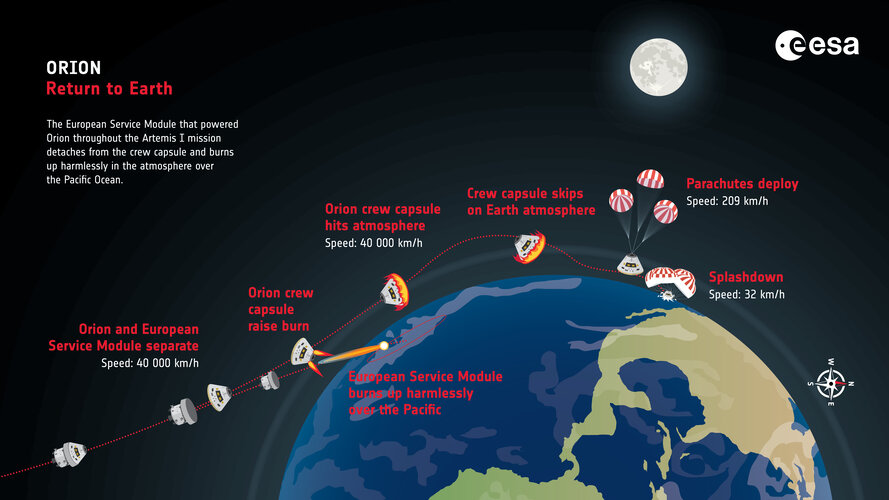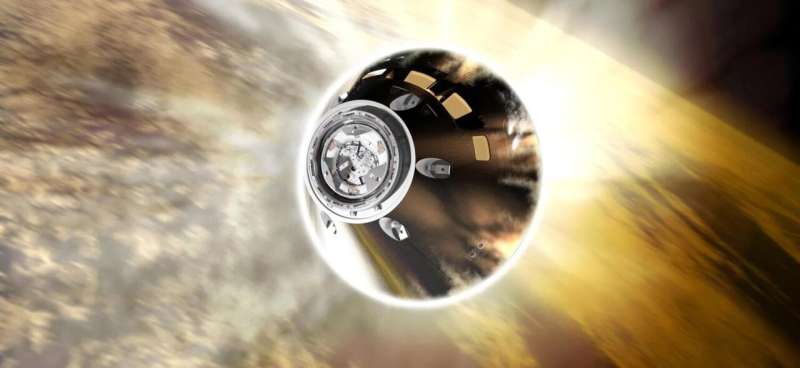
Copernical Team
SpaceX launches 40 Internet satellites for rival OneWeb into orbit
 SpaceX launched its 55th flight of the year on Thursday, as its Falcon 9 rocket lifted off from Kennedy Space Center, carrying 40 Internet satellites for a competitor.
Conditioners were about 90% favorable for liftoff at 5:27 p.m. EST with the three-batch deployment of the OneWeb satellites being completed about an hour and a half later.
"All 40 satellites have successfully separated
SpaceX launched its 55th flight of the year on Thursday, as its Falcon 9 rocket lifted off from Kennedy Space Center, carrying 40 Internet satellites for a competitor.
Conditioners were about 90% favorable for liftoff at 5:27 p.m. EST with the three-batch deployment of the OneWeb satellites being completed about an hour and a half later.
"All 40 satellites have successfully separated Globalstar signs commercial agreement with Wiagro to supply IoT Transmitters for Agtech sector
 Globalstar, Inc. (NYSE American: GSAT) today announced a commercial agreement with Wiagro, an Agtech start-up from Argentina. Globalstar is supplying Wiagro with 2,500 ST100 satellite modem transmitters for their Smart Silobag, which allows for the remote monitoring of grain conditions stored in silo bags. The partnership is effective immediately with completion of deployment anticipated through
Globalstar, Inc. (NYSE American: GSAT) today announced a commercial agreement with Wiagro, an Agtech start-up from Argentina. Globalstar is supplying Wiagro with 2,500 ST100 satellite modem transmitters for their Smart Silobag, which allows for the remote monitoring of grain conditions stored in silo bags. The partnership is effective immediately with completion of deployment anticipated through Microchip showcases RISC-V-based FPGA and space-compute solutions at RISC-V Summit
 Mid-range FPGAs and System-on-Chip (SoC) FPGAs have played a major role in moving computer workloads to the network edge. Microchip Technology (Nasdaq: MCHP) has helped fuel this transition with its award-winning FPGAs, while also delivering the first RISC-V-based FPGAs that provide twice the power efficiency of competing mid-range FPGAs, and feature a best-in-class design, operating system and
Mid-range FPGAs and System-on-Chip (SoC) FPGAs have played a major role in moving computer workloads to the network edge. Microchip Technology (Nasdaq: MCHP) has helped fuel this transition with its award-winning FPGAs, while also delivering the first RISC-V-based FPGAs that provide twice the power efficiency of competing mid-range FPGAs, and feature a best-in-class design, operating system and US grants OQ more patents for world's first 5G IoT satellite LEO constellation
 The US Patent and Trademark Office has granted OQ Technology, the pioneer of 5G IoT satellite services, patents for its "frequency synchronisation" and "timing synchronisation" technology. The two synchronisation technologies are already used for communicating with the satellites in the company's growing 5G IoT (Internet of Things) constellation connecting IoT devices globally.
Following t
The US Patent and Trademark Office has granted OQ Technology, the pioneer of 5G IoT satellite services, patents for its "frequency synchronisation" and "timing synchronisation" technology. The two synchronisation technologies are already used for communicating with the satellites in the company's growing 5G IoT (Internet of Things) constellation connecting IoT devices globally.
Following t AFRL, CNM Ingenuity shift innovation to next level at Hyperdrive Space Summit
 The Air Force Research Laboratory, or AFRL, partnered with CNM Ingenuity, or CNMI, the economic development arm of Central New Mexico Community College, to hold the 2022 Hyperdrive Space Summit in Albuquerque, New Mexico, Nov. 15-17, 2022. The Hyperdrive Space Summit is an evolution of the Hyperspace Challenge that AFRL's Technology Outreach Office began in 2018, in collaboration with CNMI, with
The Air Force Research Laboratory, or AFRL, partnered with CNM Ingenuity, or CNMI, the economic development arm of Central New Mexico Community College, to hold the 2022 Hyperdrive Space Summit in Albuquerque, New Mexico, Nov. 15-17, 2022. The Hyperdrive Space Summit is an evolution of the Hyperspace Challenge that AFRL's Technology Outreach Office began in 2018, in collaboration with CNMI, with PSLV-XL rocket motor made by industry passes test: ISRO
 The Indian Space Research Organisation (ISRO) said the performance of the booster motor made by Economic Explosives Limited for its PSLV-XL rocket was satisfactory.
The Indian space agency tested the booster motor called PSOM-XL at its rocket port in Sriharikota on Wednesday.
According to the ISRO, with this test, the private industry's capability to produce the stage for PSLV has be
The Indian Space Research Organisation (ISRO) said the performance of the booster motor made by Economic Explosives Limited for its PSLV-XL rocket was satisfactory.
The Indian space agency tested the booster motor called PSOM-XL at its rocket port in Sriharikota on Wednesday.
According to the ISRO, with this test, the private industry's capability to produce the stage for PSLV has be Terran Orbital creates new Optical Solutions Group
 Terran Orbital Corporation (NYSE: LLAP), a global leader in satellite-based solutions primarily serving the aerospace and defense industries, has announced the formation of a new Optical Solutions Group (OSG) focused on electro-optical (EO) satellite imaging products. The new group will concentrate on development and innovation of new EO products while offering a wide variety of custom-made and
Terran Orbital Corporation (NYSE: LLAP), a global leader in satellite-based solutions primarily serving the aerospace and defense industries, has announced the formation of a new Optical Solutions Group (OSG) focused on electro-optical (EO) satellite imaging products. The new group will concentrate on development and innovation of new EO products while offering a wide variety of custom-made and NASA Moon capsule Orion due to splash down after record-setting voyage
 After making a close pass at the Moon and venturing further into space than any previous habitable spacecraft, NASA's Orion capsule is due to splash down Sunday in the final test of a high-stakes mission called Artemis.
As it hurtles into Earth's atmosphere at a speed of 25,000 miles (40,000 kilometers) per hour, the gumdrop-shaped traveler will have to withstand a temperature of 2,800 degre
After making a close pass at the Moon and venturing further into space than any previous habitable spacecraft, NASA's Orion capsule is due to splash down Sunday in the final test of a high-stakes mission called Artemis.
As it hurtles into Earth's atmosphere at a speed of 25,000 miles (40,000 kilometers) per hour, the gumdrop-shaped traveler will have to withstand a temperature of 2,800 degre Orion splashdown
 Image:
Orion splashdown
Image:
Orion splashdown NASA spacecraft will soon enter Earth's atmosphere at nearly 25,000 mph. What will happen next?

Sunday at around 10:40 a.m. MT, NASA's Orion spacecraft will splash down in the Pacific Ocean after its several week-long journey to the moon and back. Space buffs can tune into NASA's livestream to witness some extreme physics—what will be the last leg of the historic Artemis 1 mission, which launched from Florida Nov. 15.
The numbers are mind-boggling: The Orion capsule will hit Earth's atmosphere flying at speeds of almost 25,000 mph (or about 11 kilometers per second) and experience temperatures nearing 5,000 degrees Fahrenheit in the process.
Iain Boyd is a professor in the Ann and H.J. Smead Department of Aerospace Engineering Sciences who has spent his career studying hypersonics, or vehicles that travel far faster than the speed of sound. He also leads a $15 million NASA institute called the Advanced Computational Center for Entry System Simulation (ACCESS). This effort investigates new ways to protect spacecraft as they undergo the extremes of entering atmospheres on Earth, Mars and beyond.

